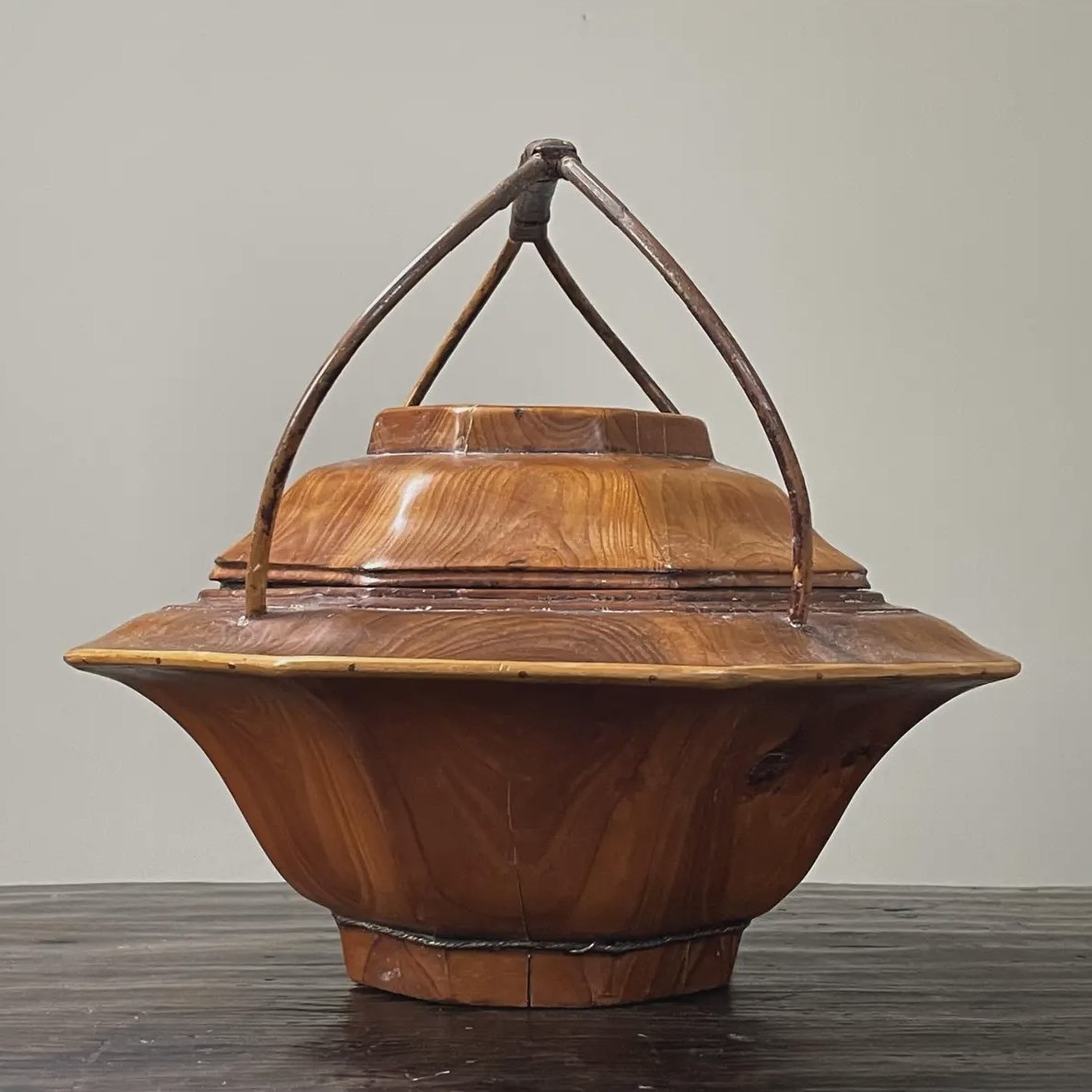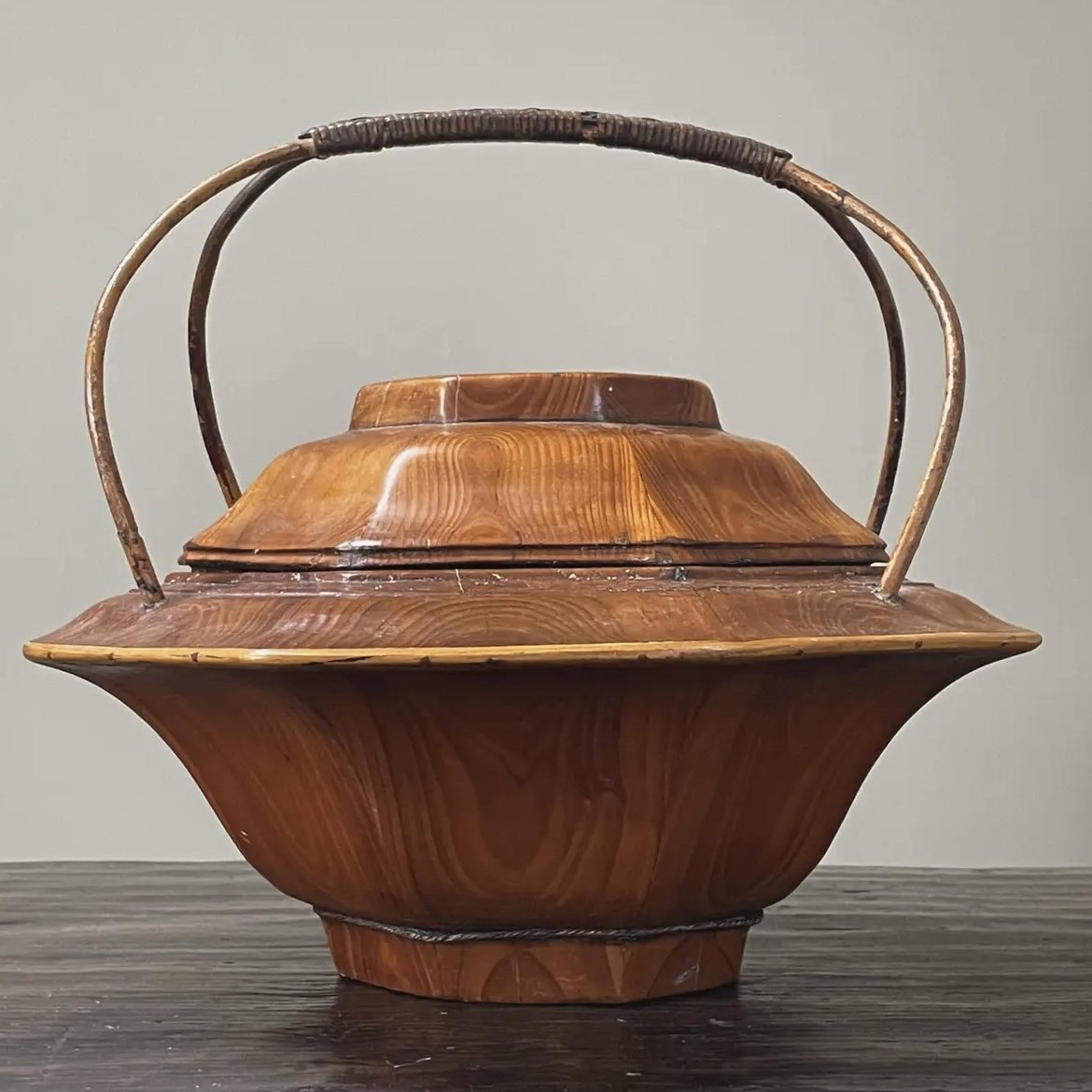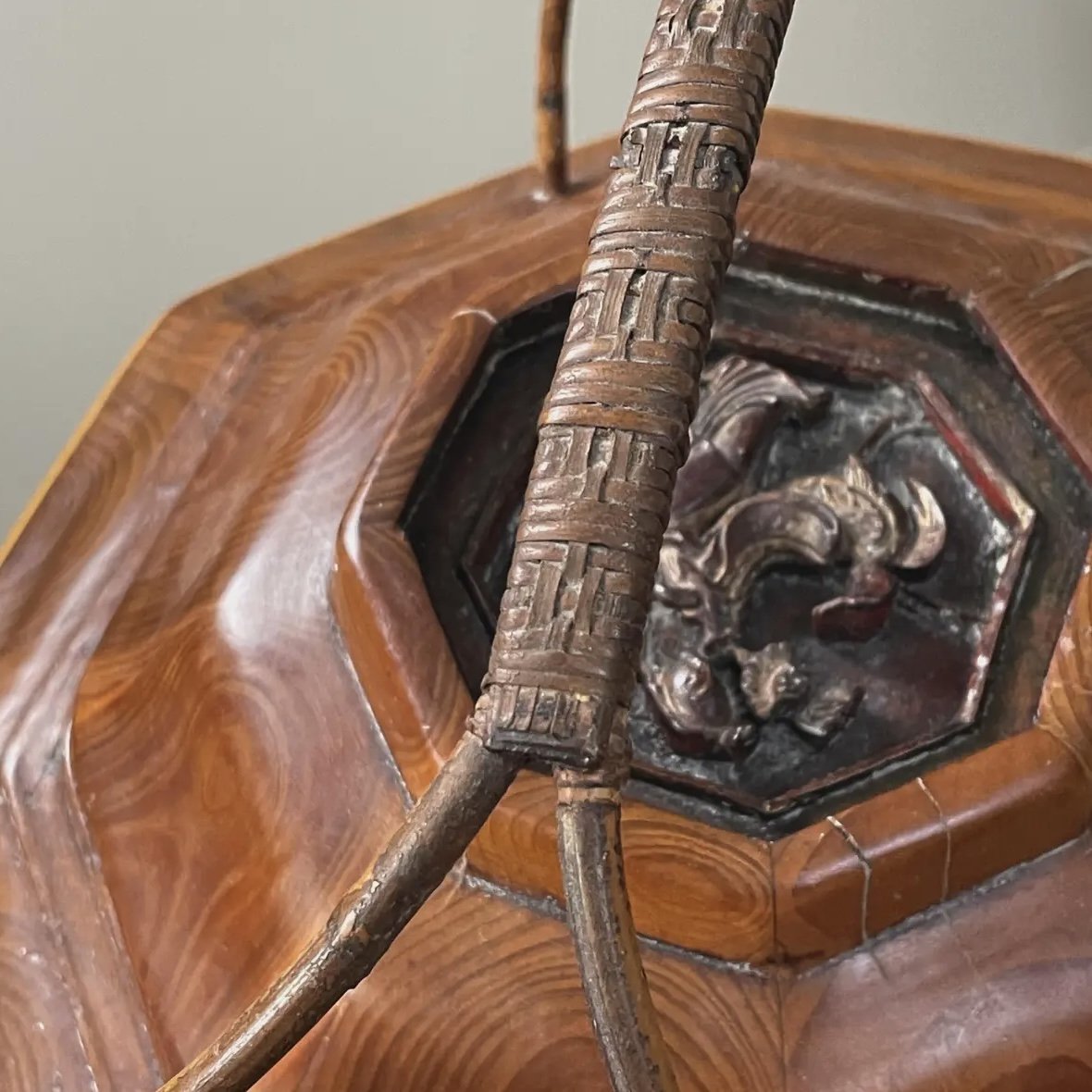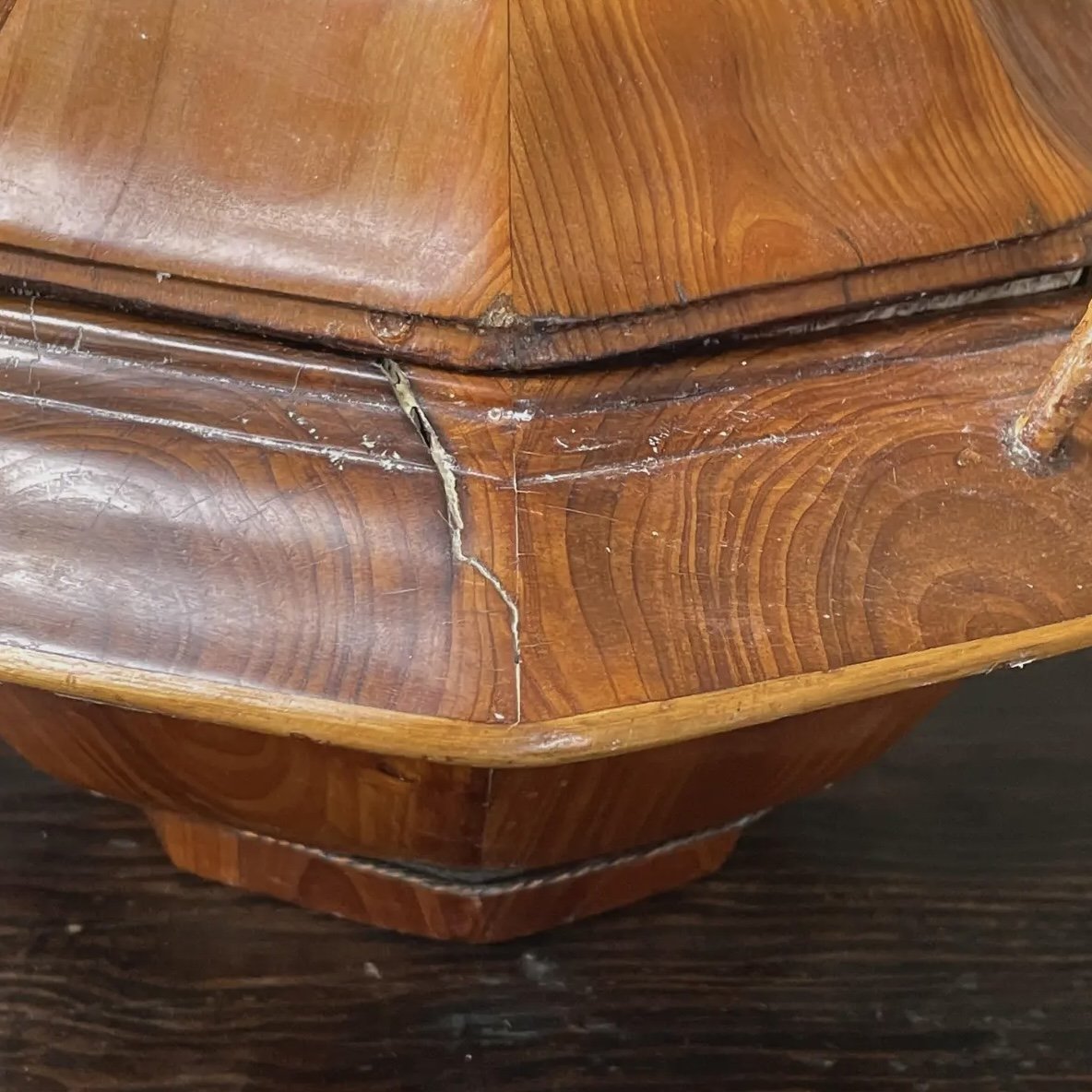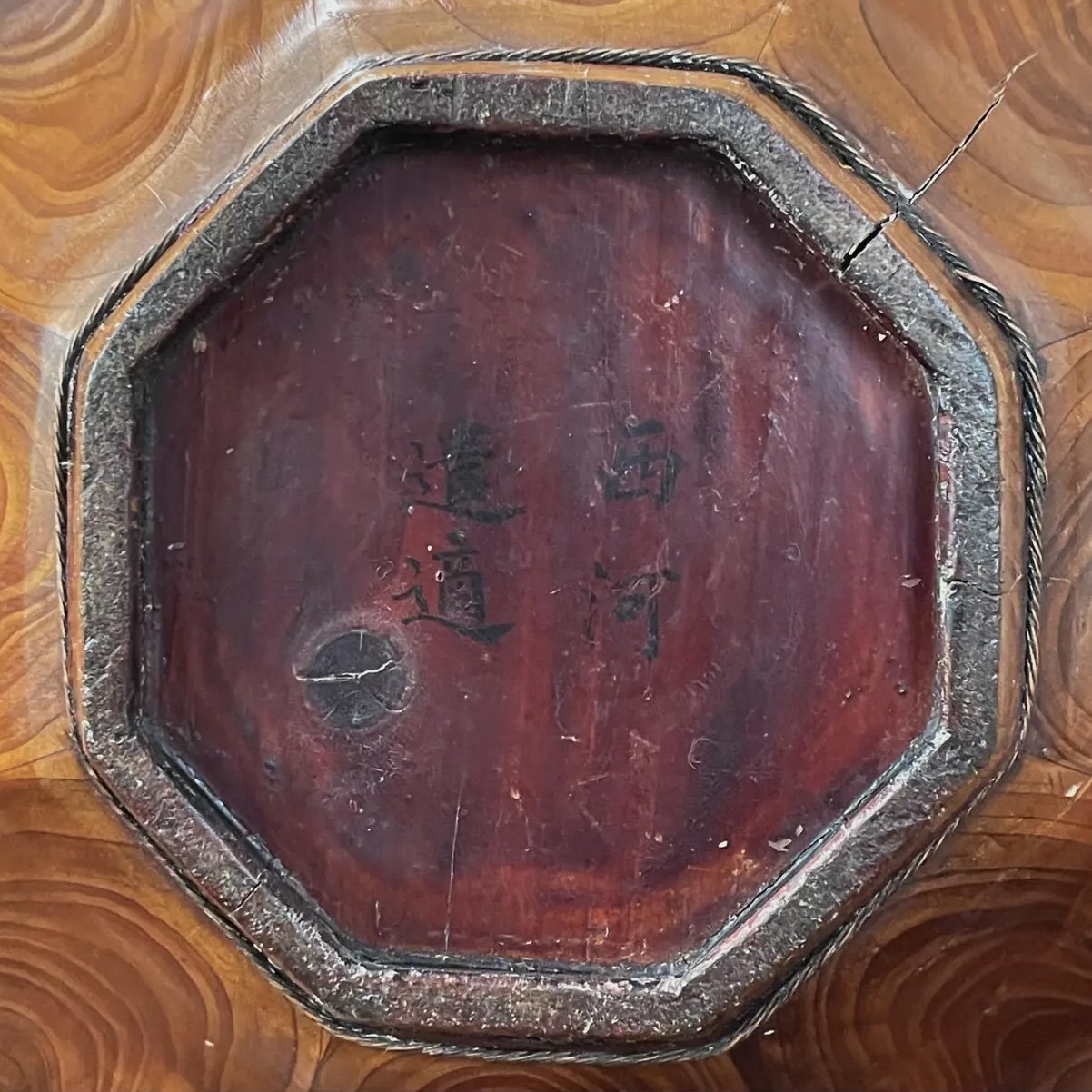 Image 1 of 10
Image 1 of 10

 Image 2 of 10
Image 2 of 10

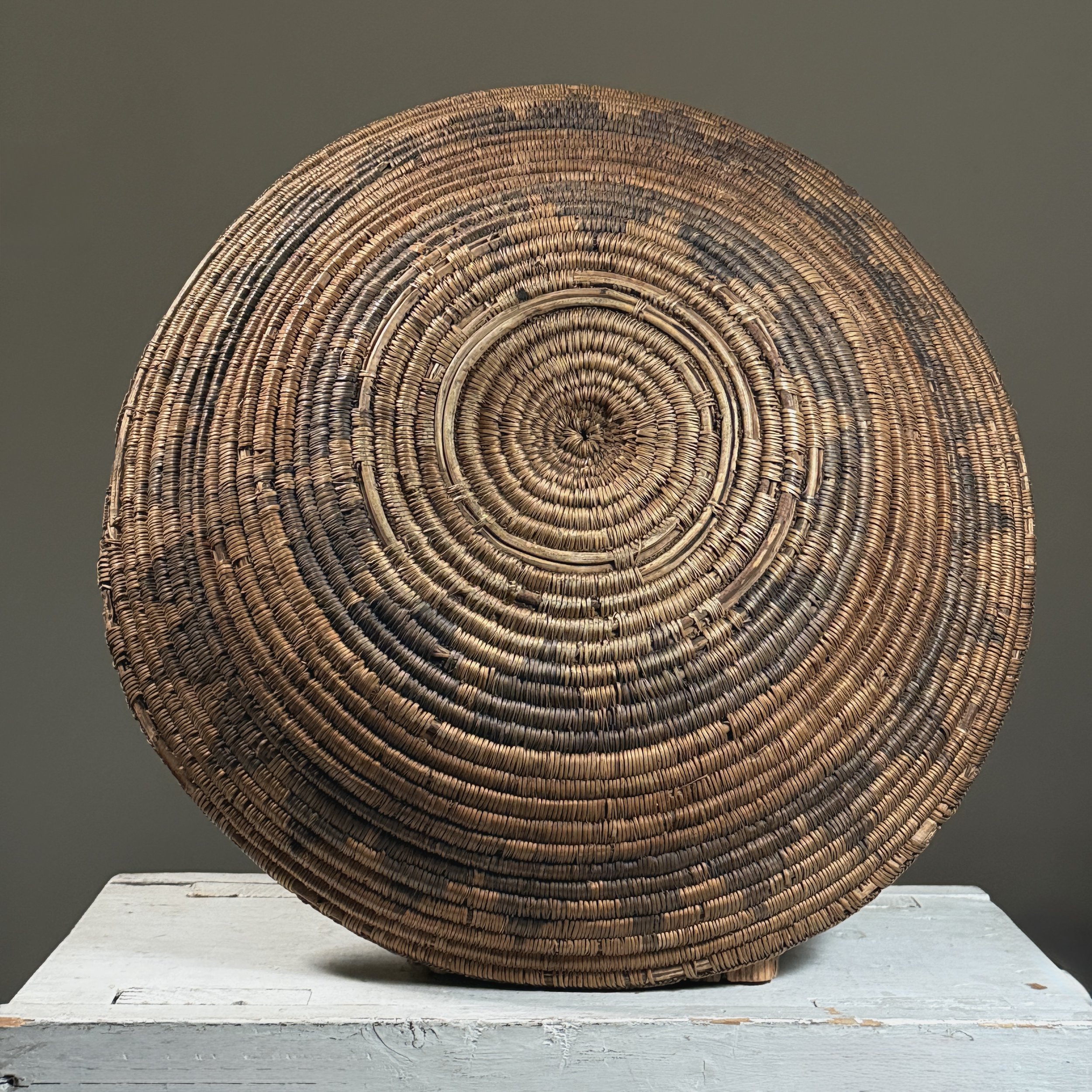 Image 3 of 10
Image 3 of 10

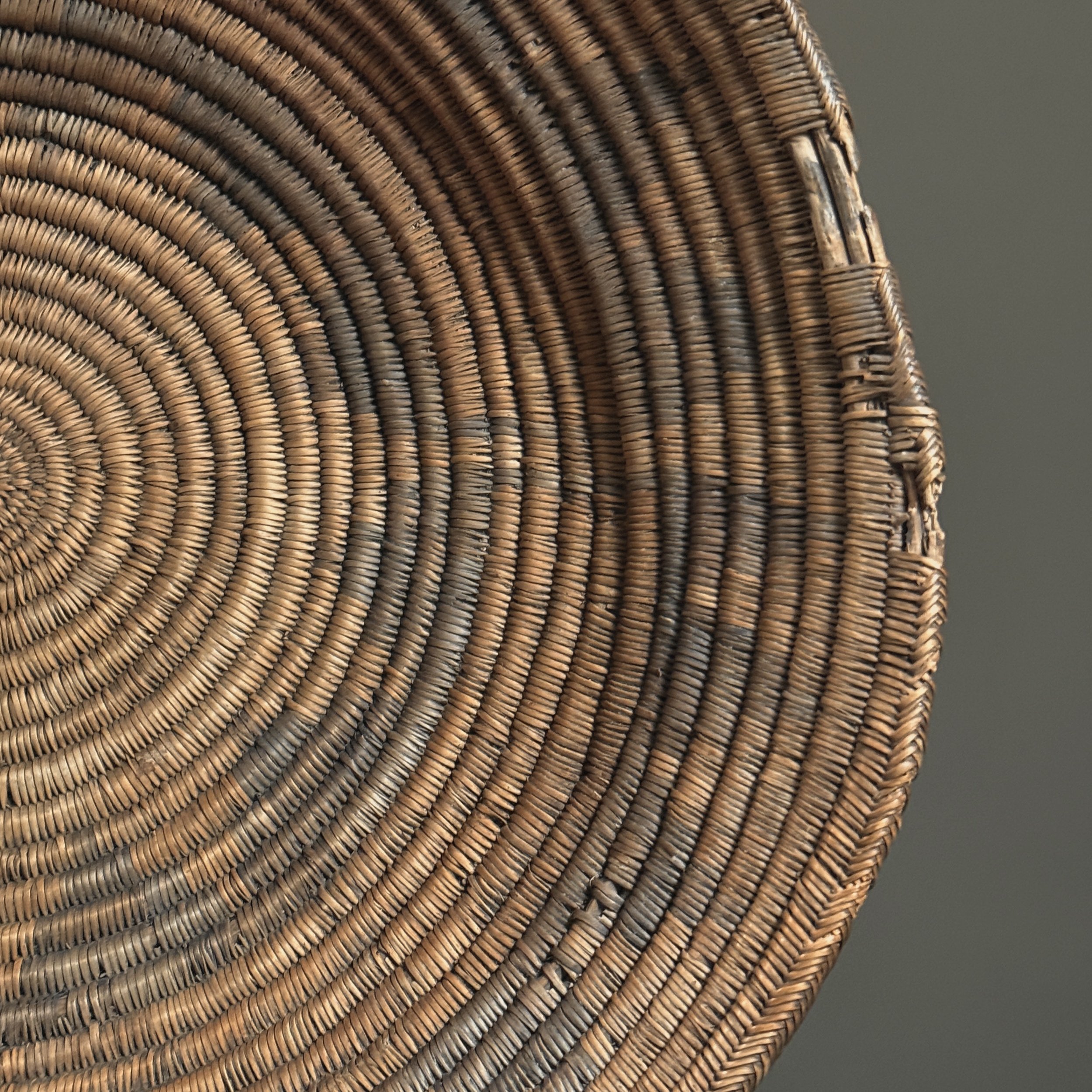 Image 4 of 10
Image 4 of 10

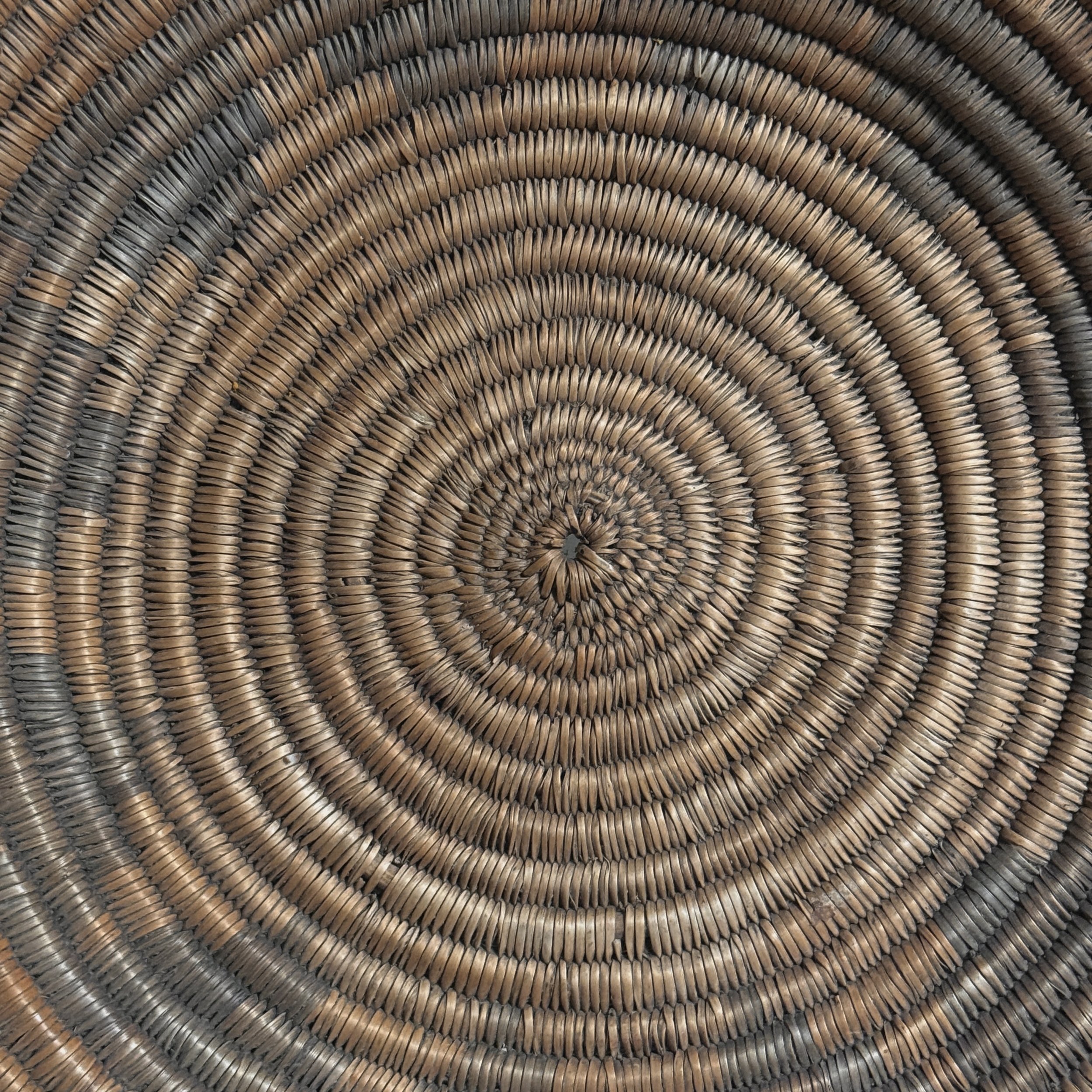 Image 5 of 10
Image 5 of 10

 Image 6 of 10
Image 6 of 10

 Image 7 of 10
Image 7 of 10

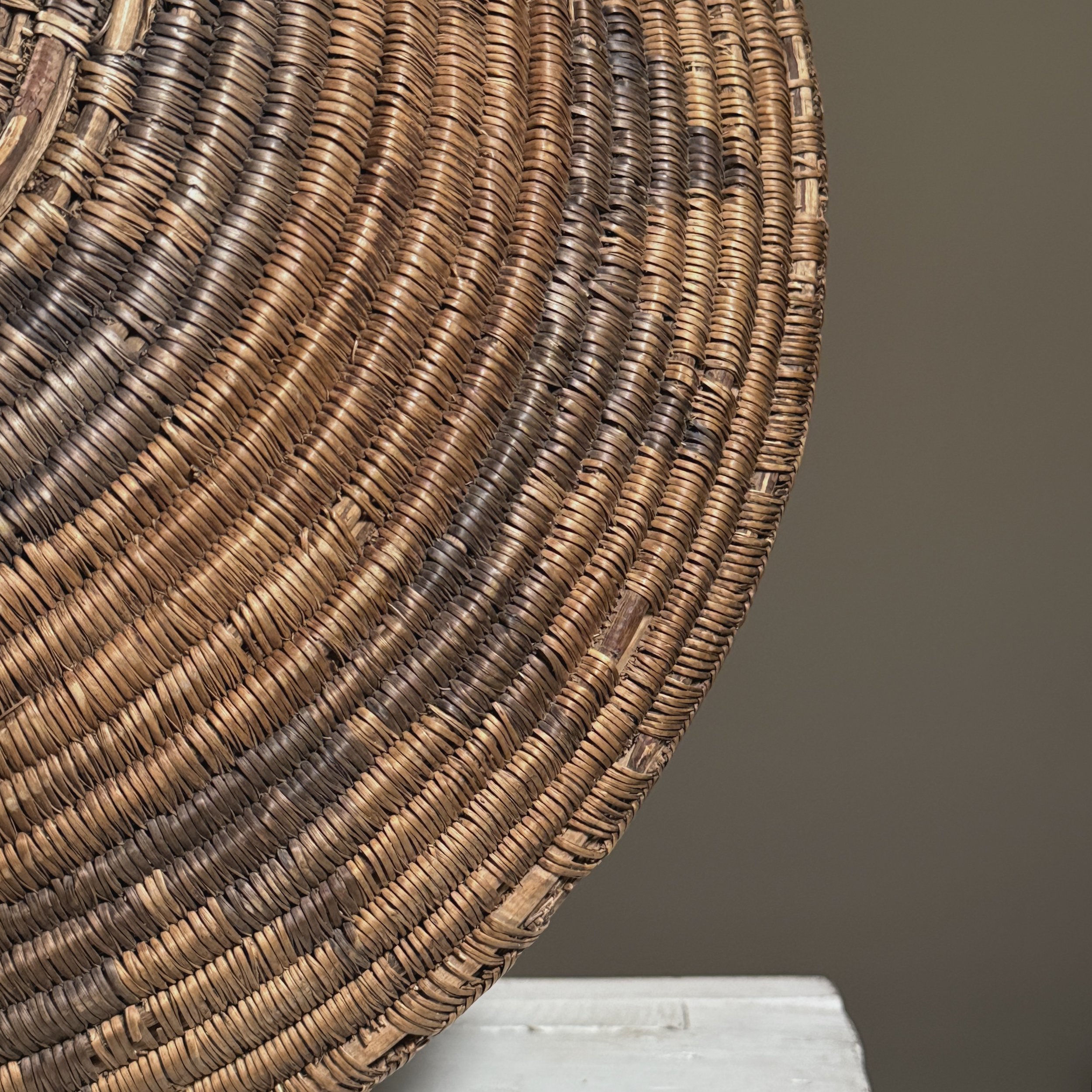 Image 8 of 10
Image 8 of 10

 Image 9 of 10
Image 9 of 10

 Image 10 of 10
Image 10 of 10











Early 20th Century Navajo Wedding/Ceremonial Basket
Navajo Wedding Basket (Early 1900s)
Dimensions: 16" diameter × 4.25" height
Construction:
- Woven by female artisans using the coiled technique. This particular basket has incredibly uniform and tight coils.
- Most likely traditional dyes from:
* Black: Piñon soot
* Red: Navajo tea (Thelesperma)
Condition Notes:
This example (c. 1900-1920) shows:
- Fading from cornmeal/pollen absorption
- Rim breaks from repeated ceremonial use
- Coil separation on reverse/Please review all photos for reference to damage/wear
Provenance:
Private Native American Art Collector
Historical Context:
Navajo wedding baskets (Ts'aa') have been central to Diné ceremonies for generations. Emerging in the mid-19th century alongside Navajo weaving traditions, these baskets evolved from utilitarian objects to sacred ceremonial items.
Ceremonial Use:
1. Weddings:
- Held cornmeal during the Kinaaldá (coming-of-age) and marriage ceremonies
- Couples would eat from the basket to symbolize unity
2. Healing:
- Used in Blessingway and Enemyway ceremonies
- Contained sacred pollen (tádídíín) for prayers
Design Symbolism:
- Black circles: Represent the rainbow guardian (Yoołgaii)
- Red bands: Symbolize sunlight and life force
- Shipapu (opening):
* Always faces east toward the Holy People
* Serves as a spiritual doorway
* The raised stitch ("bump") allows orientation by touch
Navajo Wedding Basket (Early 1900s)
Dimensions: 16" diameter × 4.25" height
Construction:
- Woven by female artisans using the coiled technique. This particular basket has incredibly uniform and tight coils.
- Most likely traditional dyes from:
* Black: Piñon soot
* Red: Navajo tea (Thelesperma)
Condition Notes:
This example (c. 1900-1920) shows:
- Fading from cornmeal/pollen absorption
- Rim breaks from repeated ceremonial use
- Coil separation on reverse/Please review all photos for reference to damage/wear
Provenance:
Private Native American Art Collector
Historical Context:
Navajo wedding baskets (Ts'aa') have been central to Diné ceremonies for generations. Emerging in the mid-19th century alongside Navajo weaving traditions, these baskets evolved from utilitarian objects to sacred ceremonial items.
Ceremonial Use:
1. Weddings:
- Held cornmeal during the Kinaaldá (coming-of-age) and marriage ceremonies
- Couples would eat from the basket to symbolize unity
2. Healing:
- Used in Blessingway and Enemyway ceremonies
- Contained sacred pollen (tádídíín) for prayers
Design Symbolism:
- Black circles: Represent the rainbow guardian (Yoołgaii)
- Red bands: Symbolize sunlight and life force
- Shipapu (opening):
* Always faces east toward the Holy People
* Serves as a spiritual doorway
* The raised stitch ("bump") allows orientation by touch
Navajo Wedding Basket (Early 1900s)
Dimensions: 16" diameter × 4.25" height
Construction:
- Woven by female artisans using the coiled technique. This particular basket has incredibly uniform and tight coils.
- Most likely traditional dyes from:
* Black: Piñon soot
* Red: Navajo tea (Thelesperma)
Condition Notes:
This example (c. 1900-1920) shows:
- Fading from cornmeal/pollen absorption
- Rim breaks from repeated ceremonial use
- Coil separation on reverse/Please review all photos for reference to damage/wear
Provenance:
Private Native American Art Collector
Historical Context:
Navajo wedding baskets (Ts'aa') have been central to Diné ceremonies for generations. Emerging in the mid-19th century alongside Navajo weaving traditions, these baskets evolved from utilitarian objects to sacred ceremonial items.
Ceremonial Use:
1. Weddings:
- Held cornmeal during the Kinaaldá (coming-of-age) and marriage ceremonies
- Couples would eat from the basket to symbolize unity
2. Healing:
- Used in Blessingway and Enemyway ceremonies
- Contained sacred pollen (tádídíín) for prayers
Design Symbolism:
- Black circles: Represent the rainbow guardian (Yoołgaii)
- Red bands: Symbolize sunlight and life force
- Shipapu (opening):
* Always faces east toward the Holy People
* Serves as a spiritual doorway
* The raised stitch ("bump") allows orientation by touch





